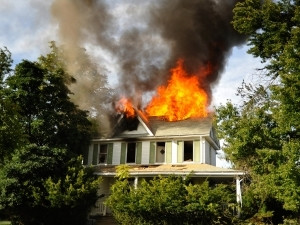
Reports relating to tragic house, shack or building fires are unfortunately common in South Africa; and sadly, many of these fires spread so quickly that the tragedy affects the whole community, says Nico van der Merwe, director, retail business, Schneider Electric South Africa.
Although paraffin is still one of the main causes of many fires in informal settlements, it is the unmaintained and tampered electrical wiring that tops the list of fire-related incidents in populated urban areas, which puts the blame on inefficient wiring and disparages the work of electrical engineers. Many times, however, the fault lies more with the mismanagement of electrical wiring by us, the consumers, through our own negligence and poor planning when we interact with energy.
Electrical systems, if and when installed by licensed professionals, is safe, secure and tucked away from potential fire hazards. It is when the electrical system is abused, misused and overused that it becomes hazardous and can set off a dangerous chain reaction that leads to expensive damages to the home.
Misconception #1: My devices overload because of faulty wiring
Overloading or plugging in too many devices in a socket outlet is the most common way of abusing and damaging electrical cables, which can deliver only a certain amount of energy, depending on their size.
In other words, when households plug several devices into a single socket outlet, electrical cables are forced to transmit electricity beyond their capacity. This extra demand for more energy causes an overload, and socket outlets and plugs heat up and melt, resulting in a potential fire that could spread throughout the dwelling.
It is therefore not because of faulty wiring, but due to plugging in too many loads, that one forces the electrical cables to exceed their capability. This is a common problem especially in dwellings that do not have enough socket outlets to plug in all the loads.
The tragic reality is if residents overload socket outlets, it can result in a fire.
To prevent such accidents, households must refrain from plugging in too many devices in a socket outlet. Using octopus extension cords can be risky too if there is no protection from power surges. Investing in surge protectors, which are designed to protect devices from overheating, is a solution as it can detect unsafe levels of energy and automatically shut down or cut off the power supply to prevent an overload.
Misconception #2: Bad wires do not supply my electronics with enough power
Electricity flows in and out the home at a constant voltage and if properly installed, electrical cables are able to transmit a steady supply of power. Excess or inadequate supply, on the other hand, can cause damage to appliances and electronics. Fluctuations, however, are not caused by inadequate wiring but from sudden spikes and falls in power brought on by unexpected blackouts and thunderstorms. These uncontrolled conditions, which disrupt the energy supply, cause plugged-in devices to erratically compensate for the loss and gain, thus causing internal damage to electronics and appliances that lead to short-circuiting or worse, fire.
We can protect our investments from such situations using an automatic voltage regulator (AVR). This monitors and regulates the input and output of energy of devices and is capable of distributing the correct amount of energy needed by different appliances and electronics. It also provides protection from both power surges and energy fluctuations by providing a reserve amount of energy needed for safe shut down.
Misconception #3: Defective wires damage my devices
Whenever we can, we buy expensive electronics and the latest appliances to upgrade our homes. We strive to make our household more comfortable and convenient with technology. So when these pricey investments fail and cause accidents, we often immediately blame the damage on the electrical wiring. This is another example where the fault lies with our own actions and poor planning. Our devices suffer damages because we don't understand that as we upgrade our homes, they will require more power to operate, but the capacity of our electrical wires to deliver energy remains the same.
Such mistakes and accidents are easily avoidable and can always be prevented. We must be mindful of the technology that we add to our homes and if the electrical system is capable of supplying enough power. Ask retailers what the operational requirements of the devices are and if necessary, install safety mechanisms like circuit breakers, which can protect your home. Circuit breakers will be able to monitor and protect your home from overloading scenarios and shut down the supply before additional damage can occur. The simplest way of ensuring the safety of your family is to be mindful of the technology you bring in to your home, and checking if the electrical system is capable of supplying enough power to all devices.
In identifying these misconceptions on what causes house fires, we can see that our negligence and inattention to how we consume energy bears more weight than faulty wiring, but our actions are always something that we have control over. By understanding how your household's electrical system works and the power requirements of appliances and electronics, you can easily prevent and avoid potential fire hazards. A last important point is for every home to have the fire brigade number so that a call can be made immediately, should a fire occur.
For more information on residential electrical systems and solutions, visit www.schneider-electric.com.
Share
Schneider Electric
As a global specialist in energy management with operations in more than 100 countries, Schneider Electric offers integrated solutions across multiple market segments, including leadership positions in utilities and infrastructure, industries and machines manufacturers, non-residential building, data centres and networks and in residential. Focused on making energy safe, reliable, efficient, productive and green, the group's 150 000 plus employees achieved sales of EUR24 billion in 2013, through an active commitment to help individuals and organisations make the most of their energy.
Editorial contacts